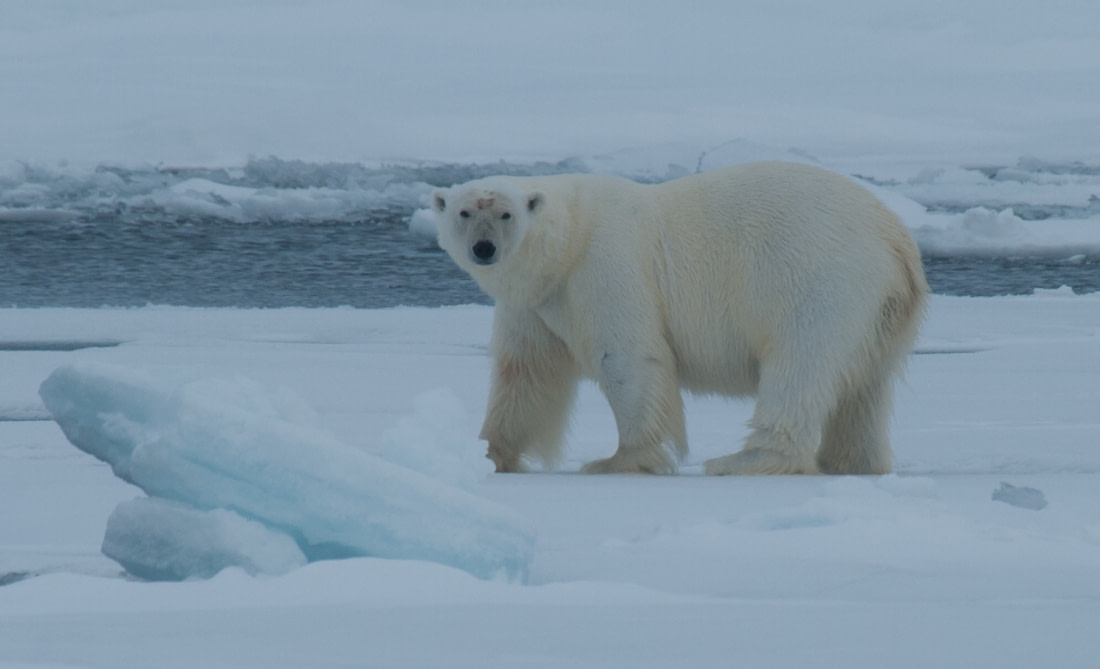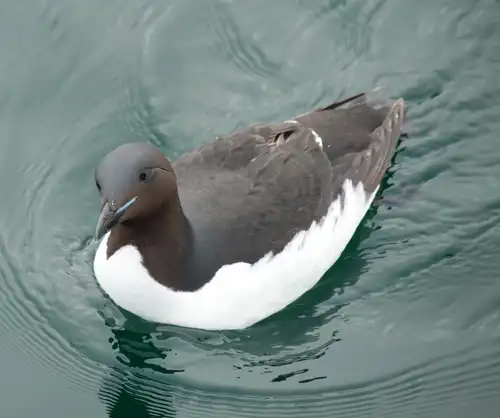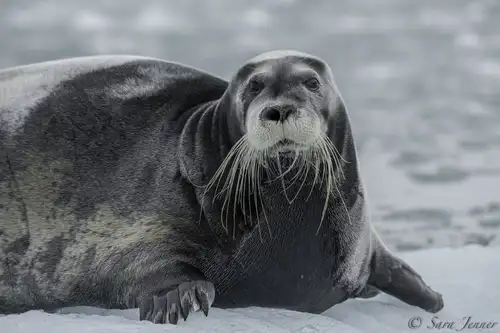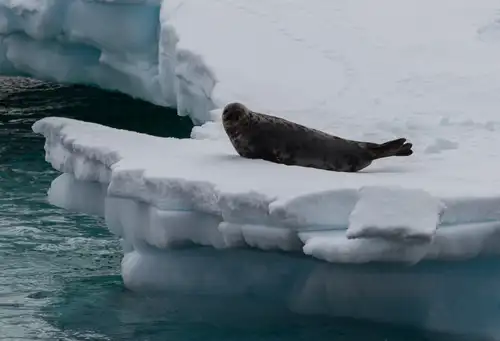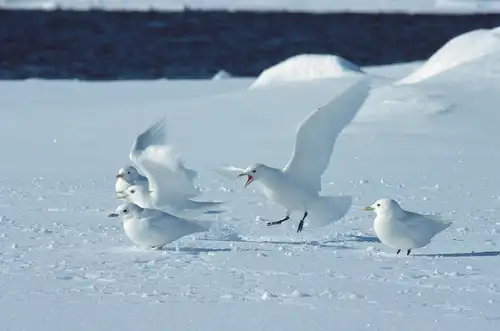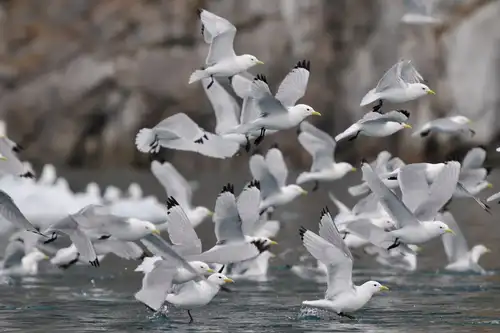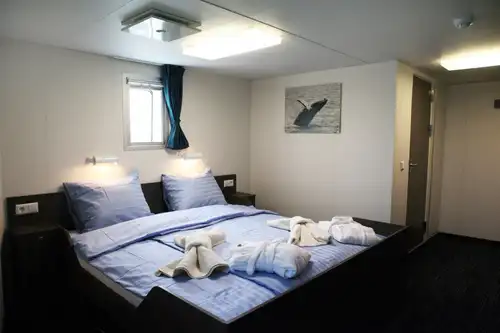




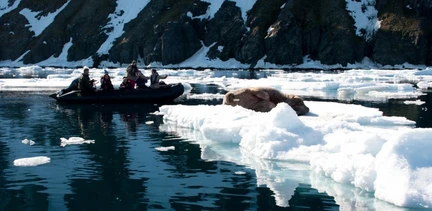










































 8 Days/7 Nights
8 Days/7 Nights




Long hikes are for groups of up to 24 people, with two armed guides and a Zodiac boat watching for polar bears. Participants should be ready to walk at least 15 km (9 miles) on semi-rough terrain, including shorelines, tundra, low hills, and river crossings. Walks last about six hours, including breaks. We walk at a steady pace without crossing alpine terrain. Those not joining the long walk will have a morning landing at the start point and an afternoon landing at the end point.
Cleaning the Shores
Want to help the environment? Join us in cleaning plastic and other waste from the shores. Ocean garbage like fishing gear and plastic harms animals. Supported by AECO and local authorities, we clean beaches with passengers. Guides assist, and collection bags are provided. About 50 people clean in the morning while others explore, then switch in the afternoon. If bears or other issues prevent cleaning, we'll find another area.
Arrival in Longyearbyen
Arrive in Longyearbyen, the main town of the largest island in the Svalbard archipelago. Explore this former mining town with its church and museum. In the evening, the ship sails out of Isfjorden, where you might see a minke whale.
Exploring Hornsund
We cruise the side fjords of Hornsund in southern Spitsbergen, admiring the towering peaks. The area has 14 glaciers, and we might see seals and polar bears. Nearby cliffs host nesting birds. In the evening, we might see harp seals on ice floes.
Long hike: If possible, we land at Treskelodden and walk to Adriabukta, then west to Hyrneodden and north to Wibewika glacier (16 km / 10 miles). Others will explore Brepollen and Luciakammen or Sofiakammen.
Diskobukta Adventure
After navigating Storfjorden's drift ice, we land in northwest Edgeøya. Walk to Rosenbergdalen, home to reindeer, then visit a cliff with nesting birds and a beach with walruses. See remains of a Pomor house and walrus bones.
Long hike: If possible, land at Blankoddden and walk to Kapp Lee (20 km / 12.4 miles) or south of Rosenbergdalen (17 km / 10.6 miles). If not, an alternative hike may be offered.
Freemansundet History
In Freemansundet, we land at Sundneset on Barents Island. Visit a historic hut, walk the tundra for wildlife, and take a Zodiac cruise near Freeman Glacier. If ice blocks the way, we'll sail to Negribreen for a Zodiac cruise and land on Walrus Island.
Long hike: If possible, land on Barents Island and walk to Freemanbreen (20 km / 12.4 miles). This area is good for spotting polar bears.
Ivory Gulls at Agardhfjellet
Sail to the east side of west Spitsbergen. Walk to ivory gull breeding sites at Agardhfjellet, where fossils are scattered.
South Spitsbergen
Land at Stellingfjellet, near a large bird colony, then explore the rarely visited south coast at Isbukta.
Bell Sund's Richness
Explore Bell Sund, a large fjord system with lush vegetation. Visit Ahlstrandhalvøya to see beluga skeletons or explore tundra and bird breeding areas.
Long hike: If possible, land at Recherchelagune and walk to Ahlstrandhalvøya, or start at Ingeborgfjellet and walk to van Muydenbukta.
Return to Longyearbyen
Your adventure ends as you disembark in Longyearbyen, taking home unforgettable memories.

Scuba Diving Trips in Antarctica and the Arctic
Our polar voyages provide maximum firsthand contact with local wildlife and terrain, as well as unparalleled adventures below the waves.
Contributing by Cleaning Up
Clean Up Svalbard is an initiative to remove coastal waste, launched by the governor of Svalbard in collaboration with AECO, the Association of Arctic Expedition Cruise Operators.
Leave the Vessel Behind on Our Long Hikes Activity
Immerse yourself in the vibrant surroundings of Greenland and Svalbard with our long hikes activity. Enjoy the Arctic summer far from the vessel as you embark on a full-day hike, crossing tundra, rivers, and rugged backcountry.







































































m/v Ortelius
The ice-strengthened Ortelius is fully equipped for polar exploration and can accommodate helicopter flights when necessary.

Specifications
| Passengers: | 108 passengers in 50 cabins |
| Staff & crew: | Crew 44 | Guides 8 | Doctor 1 |
| Length: | 90.95 meters |
| Breadth: | 17.20 meters |
| Draft: | 5.4 meters |
| Ice class: | UL1 (Equivalent to 1A) |
| Displacement: | 4090 tonnes |
| Propulsion: | 6 ZL 40/48 SULZER |
| Speed: | 10.5 knots average cruising speed |
Cabins Gallery


Ship Interior Gallery


Ship Exterior Gallery


Ortelius was originally the Marina Svetaeva. Built in Gdynia, Poland in 1989, it served as a special-purpose vessel for the Russian Academy of Science. Later it was re-flagged and renamed after the Dutch/Flemish cartographer Abraham Ortelius (1527 – 1598), who in 1570 published the first modern world atlas: Theatrum Orbis Terrarum or Theater of the World. At that time his atlas was the most expensive book ever printed. Ortelius is classed by Lloyd’s Register in London and flies the Dutch flag.
Perfect for Any Expedition
The vessel has the highest ice-class notation (UL1, equivalent to 1A) and is therefore suitable to navigate in solid one-year sea ice as well as loose multi-year pack ice. Ortelius can accommodate up to 108 passengers and has an abundance of open-deck spaces. It is manned by 24 highly experienced nautical crew members, 20 hotel staff, eight expedition specialists (one expedition leader, one assistant, and six lecturer-guides), and one doctor.
Ortelius: a Vessel with Comfort and Character
Please be aware that a small number of cabins may have a partially obstructed view due to the size of the windows and the design requirements of the ship. For example, some windows may be partly obstructed in the lower half by a gangway. The best view is always on the outer deck or the bridge. Though our voyages are primarily meant to offer our passengers an exploratory wildlife program with as much time ashore as possible, Ortelius offers all the comforts of a standard hotel ― along with a bar and lecture room. Flexibility assures maximum wildlife opportunities. As such, Ortelius carries 10 Zodiacs with 60hp Yamaha engines.
What to Wear
In keeping with the spirit of expedition, dress on board is informal. Bring casual and comfortable clothing for all activities, and keep in mind that much of the scenery can be appreciated from deck ― which can be slippery. Bring sturdy shoes with no-slip soles, and make sure your parka is never far away in case one of our crew shouts “Whales!” over the loudspeaker and you have to dash outside in a moment’s notice. Opt for layers, as it is comfortably warm aboard the ship though often cold on deck.
How to Pay
Refreshments and souvenirs will be charged to your cabin. The day before departure you can settle your bill with the hotel manager, paying by credit card (Visa or MasterCard) or cash (euro, or in some cases dollar). We cannot, however, accept checks. Though the prices and standard currency on board is in the euro, other currencies may be accepted at the discretion of the hotel manager, at prevailing rates.
Electric Current
The electrical supply aboard ship is 220v, 60Hz. Electrical outlets are standard European with two thick round pins, so some passengers may need a 220v/110v converter.
Gratuities
The customary gratuity to the ship’s service personnel is made as a blanket contribution at the end of the voyage and is divided among the crew. Tipping is a personal matter, and the amount you wish to give is at your sole discretion. As a generally accepted guideline, we suggest 8 ― 15 euros per passenger per day. It is better for the crew if you give cash.
Non-Smoking Policy
We have a non-smoking policy inside all our vessels, though you can smoke in certain designated areas. We ask that you please respect the wishes of non-smokers.
Your Physical Condition
You must be in good overall health and be able to walk several hours per day. The expedition is ship-based and physically not very demanding, but we spend as much time as possible on shore. You are, however, welcome to remain aboard the ship if you prefer. To join most excursions you must be able to get up and down the steep gangway ― from the ship to the water level ― to board the Zodiacs. Staff will assist you in and out of the boats, and boarding will become progressively easier with practice, but conditions on shore can be slippery and rocky. Remember, you will be traveling in remote areas without access to sophisticated medical facilities, so you must not join this expedition if you have a life-threatening condition or need daily medical treatment.
- Our expedition leaders always do their best to ensure the camping activity is carried out, but sometimes this is impossible due to unsafe environmental conditions. If such is the case, we may offer camping on the outer decks of the ship.
- We advise that you bring as little cash as possible. You can pay the bill at the end of your expedition with a credit card while still on board. You might need some cash for purchases during excursions, but most places also accept payment with credit cards. For tipping the crew and expedition team, however, we prefer that you use cash.
- When you make a confirmed reservation, we require a 40% deposit. But if the reservation is made within two months prior to departure, the full price of the voyage is due at the time of booking.
- The currency used on all vessels is the Euro, but you can also pay with USD.
- Svalbard's diverse list of wildlife is one of its most compelling features, especially for photographers and wildlife enthusiasts. Svalbard cruises also offers an intriguing landscape with many different types of geological features from high mountains to ice capped ancient sea floor. Glaciers and fjords are multifold and the sea ice is a major attraction.
- An expedition to Spitsbergen, which is the only inhabited island within the Svalbard archipelago, will not reveal an overly crowded island. In fact, there are only 2,642 people living in Spitsbergen, and 2,040 of them are in Longyearbyen. Therefore, any trip to Spitsbergen that includes a voyage outside of Longyearbyen will be relatively isolated.
- The Ortelius was built in Poland in 1989 for the Russian Academy of Science.
- There are in total 50 cabins at the Ortelius. 4 quadruple cabins with bunk beds. 26 twin porthole cabin with 2 single berths. 12 twin cabins with windows and 2 lower berths. 2 twin deluxe cabins with windows and 2 single lower berths. 6 superior cabins with double beds. All cabins are spacious outside cabins with a minimum of two portholes or windows per cabin and all cabins have a private shower and toilet.
You May Also Like



Alpine Peaks of Spitsbergen, Ski & Sail
 8 Days / 7 Nights
8 Days / 7 Nights

Arctic Ocean - Fair Isle, Jan Mayen, Ice Edge, Spitsbergen, Birding
 10 Days / 9 Nights
10 Days / 9 Nights
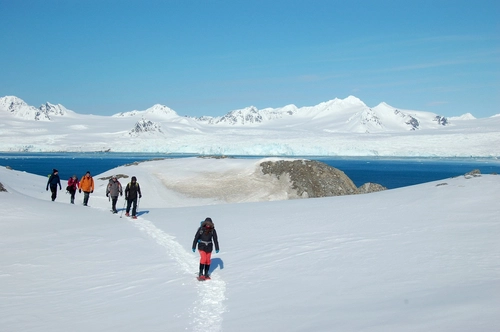
North Spitsbergen - Arctic Spring , Hike & Sail
 8 Days / 7 Nights
8 Days / 7 Nights

North Spitsbergen Explorer - Into the pack ice - Polar Bear Special
 8 Days / 7 Nights
8 Days / 7 Nights

Arctic Ocean - Jan Mayen, Ice edge, Spitsbergen, Birding
 9 Days / 8 Nights
9 Days / 8 Nights

Arctic Ocean - Fair Isle, Jan Mayen, Ice edge, Spitsbergen, Birding - Summer Solstice
 10 Days / 9 Nights
10 Days / 9 Nights

North Spitsbergen Explorer - Versatile landscapes, sea ice & wildlife
 8 Days / 7 Nights
8 Days / 7 Nights

North Spitsbergen Basecamp – Summer Solstice - Free Kayaking, Hiking, Photo Workshop, Diving (supplemented)
 8 Days / 7 Nights
8 Days / 7 Nights

North Spitsbergen Explorer - Versatile landscapes, sea ice & wildlife - Summer Solstice
 8 Days / 7 Nights
8 Days / 7 Nights

North Spitsbergen - Arctic Summer
 11 Days / 10 Nights
11 Days / 10 Nights

East Spitsbergen - Home of the Polar Bear, Including Long Hikes & Cleaning the Shores
 8 Days / 7 Nights
8 Days / 7 Nights

Around Spitsbergen, In the realm of Polar Bear & Ice
 10 Days / 9 Nights
10 Days / 9 Nights

North Spitsbergen Explorer – Into the Pack Ice – Polar Bear & Whale Special
 10 Days / 9 Nights
10 Days / 9 Nights

Northeast Greenland Solar Eclipse Explorer Voyage
 14 Days / 13 Nights
14 Days / 13 Nights

Spitsbergen - Northeast Greenland, Fly & Sail
 20 Days / 19 Nights
20 Days / 19 Nights

Around Spitsbergen incl. Nordaustlandet
 10 Days / 9 Nights
10 Days / 9 Nights

Alpine Peaks of Spitsbergen - Ski & Sail
 8 Days / 7 Nights
8 Days / 7 Nights

Arctic Ocean - Fair Isle, Jan Mayen, Ice Edge, Spitsbergen, Birding Special
 10 Days / 9 Nights
10 Days / 9 Nights

North Spitsbergen Explorer - Versatile Landscapes, Sea Ice & Wildlife
 8 Days / 7 Nights
8 Days / 7 Nights

North Spitsbergen Explorer - Into the Pack Ice - Polar Bear Special
 8 Days / 7 Nights
8 Days / 7 Nights

North Spitsbergen, Arctic Summer - Summer Solstice
 11 Days / 10 Nights
11 Days / 10 Nights

North Spitsbergen Explorer - Versatile Landscapes, Sea Ice & Wildlife - Summer Solstice
 8 Days / 7 Nights
8 Days / 7 Nights

North Spitsbergen Explorer - Into the Pack Ice - Polar Bear Special - Summer Solstice
 8 Days / 7 Nights
8 Days / 7 Nights

Arctic Ocean - Spitsbergen: Jan Mayen, Ice Edge & Birding - Summer Solstice
 9 Days / 8 Nights
9 Days / 8 Nights

North Spitsbergen Basecamp - Free kayaking, Hiking, Photo Workshop
 8 Days / 7 Nights
8 Days / 7 Nights

North Spitsbergen, Arctic Summer
 11 Days / 10 Nights
11 Days / 10 Nights

Around Spitsbergen, in the Icy Realm of the Polar Bear
 10 Days / 9 Nights
10 Days / 9 Nights

A Taste of North Spitsbergen - Compact Arctic Adventure
 6 Days / 5 Nights
6 Days / 5 Nights

South Spitsbergen Explorer - Bear Island - Diving (supplemented)
 10 Days / 9 Nights
10 Days / 9 Nights

Around Spitsbergen - Arctic Summer
 15 Days / 14 Nights
15 Days / 14 Nights

Around Spitsbergen and Nordaustlandet, In the Icy Realm of the Polar Bear
 10 Days / 9 Nights
10 Days / 9 Nights

Spitsbergen, Northeast Greenland & Scoresby Sund, Including Long Hikes
 14 Days / 13 Nights
14 Days / 13 Nights

South Spitsbergen, Bear Island & Mainland Norway - Aurora Borealis
 6 Days / 5 Nights
6 Days / 5 Nights

Svalbard’s 12 Most Iconic Animals

Arctic on Foot: Hiking and Snowshoeing the Far North

Birding Opportunities Abound in Spitsbergen
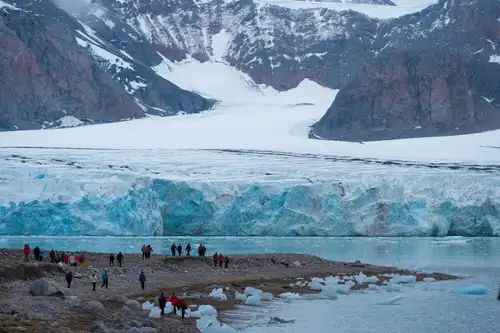
16 Conversation-Starting Svalbard Facts

Polar Bear Primer: Eight Facts About the Arctic Wanderer

Spitsbergen: Alkefjellet magic

Amphibian, reptiles and herbivore mammals in the Arctic
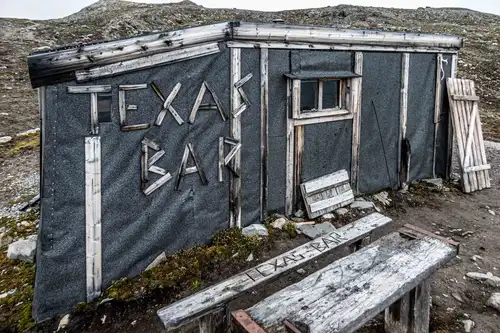
Svalbard’s Texas Bar
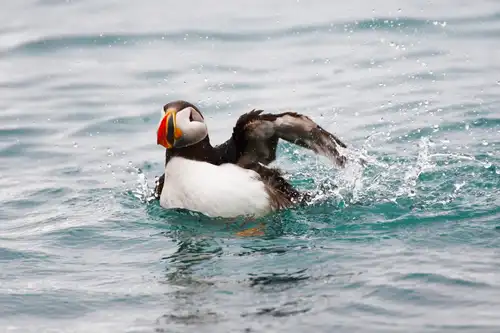
Puffins: Clown Birds of the Atlantic

15 Toothy Facts About the Atlantic Walrus

Six Must-See Svalbard Sites

8 Scientific Wonders of the Arctic

Narwhals: the Aquatic Unicorns of the Arctic

Polar bear encounter in Spitsbergen

The Arctic Borderland of Kongsfjorden, Svalbard

Where the Polar Bears Roam

Svalbard a Disneyland for geologists

Around Spitsbergen vs. North Spitsbergen

The polar bear: king of the Arctic food chain







